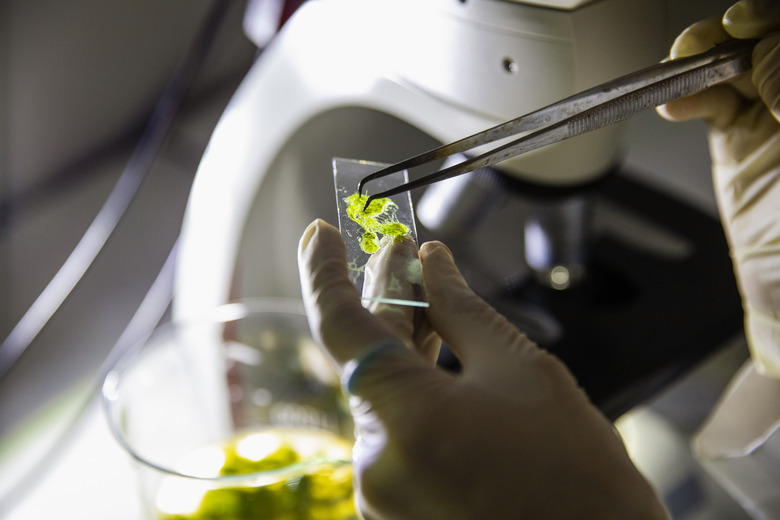Photosynthesis Activities For Middle School
Photosynthesis can be a complicated concept to understand at any grade level. But with engaging and thought-provoking activities, children can develop a hands-on appreciation for this important principle.
Project One
Students can go on a field trip outside to collect colorful leaves to identify and preserve by placing the leaves between wax paper and ironing them. Have the children study light's affect on the color by systematically covering the leaves with foil once in its original shade and then each time the light alters the color. The end result will be a nifty multi-colored leaf illustrating the principle. On the opposite end, demonstrate what happens to a plant without sunlight by picking up a houseplant and in fragment using some foil cut in shapes to cover the plant throughout the season. Make sure the plant is getting plenty of sunlight. Have them keep a journal of the weather, and after a few days remove the foil to contrast the covered area to the rest of the flourishing plant.
Project Two
Demonstrate the phenomena of cellular respiration as it relates to photosynthesis by doing a project with dry yeast, a soda bottle, a balloon, sugar, warm water and masking tape. Place a spoonful of yeast and two spoons of sugar in the soda bottle, and fill it with three-fourths cup of warm water, then quickly place the balloon over the bottle opening and seal the bottle with masking tape. Shake the bottle, and measure the diameter of the balloon every two minutes. Shake again and repeat the process as students record their observations in as much detail as possible to discover the relationship between the increments of time and the balloon's size. Explain how the gas that filled the balloon illustrated cellular respiration.
Project Three
A science project more directly related involves three test tubes with caps, a beaker, Bromothymol Blue solution, a straw, a light source, foil and the Elodea plant. Pour approximately 75 ml of the Blue solution in the beaker, and observe the color of the contents. Use the straw to illustrate carbon dioxide by blowing into it until the solution is yellow. Pour it evenly into the three tubes. Place a 6 cm piece of Elodea in one tube and close it, then put two plant pieces the same length covered with foil in the second (thus keeping light out of the liquid.) Be sure the plant is completely covered in the solution. Cap the third test tube and put them all in a beaker of water, then place the beaker around 250 cm from a lamp, and leave it all there overnight. Then remove the plant and put the tubes in front of a white wall, having the students recording the resulting tube colors. Ask questions about the color changes and what it means. Older students can discuss independent and dependent variables involved. Discuss why the plant produced bubbles when near the light, and hopefully everyone will have a new understanding of why plants emit oxygen during photosynthesis.
Cite This Article
MLA
Zeske, Mateo. "Photosynthesis Activities For Middle School" sciencing.com, https://www.sciencing.com/photosynthesis-activities-middle-school-5267691/. 5 August 2009.
APA
Zeske, Mateo. (2009, August 5). Photosynthesis Activities For Middle School. sciencing.com. Retrieved from https://www.sciencing.com/photosynthesis-activities-middle-school-5267691/
Chicago
Zeske, Mateo. Photosynthesis Activities For Middle School last modified March 24, 2022. https://www.sciencing.com/photosynthesis-activities-middle-school-5267691/
